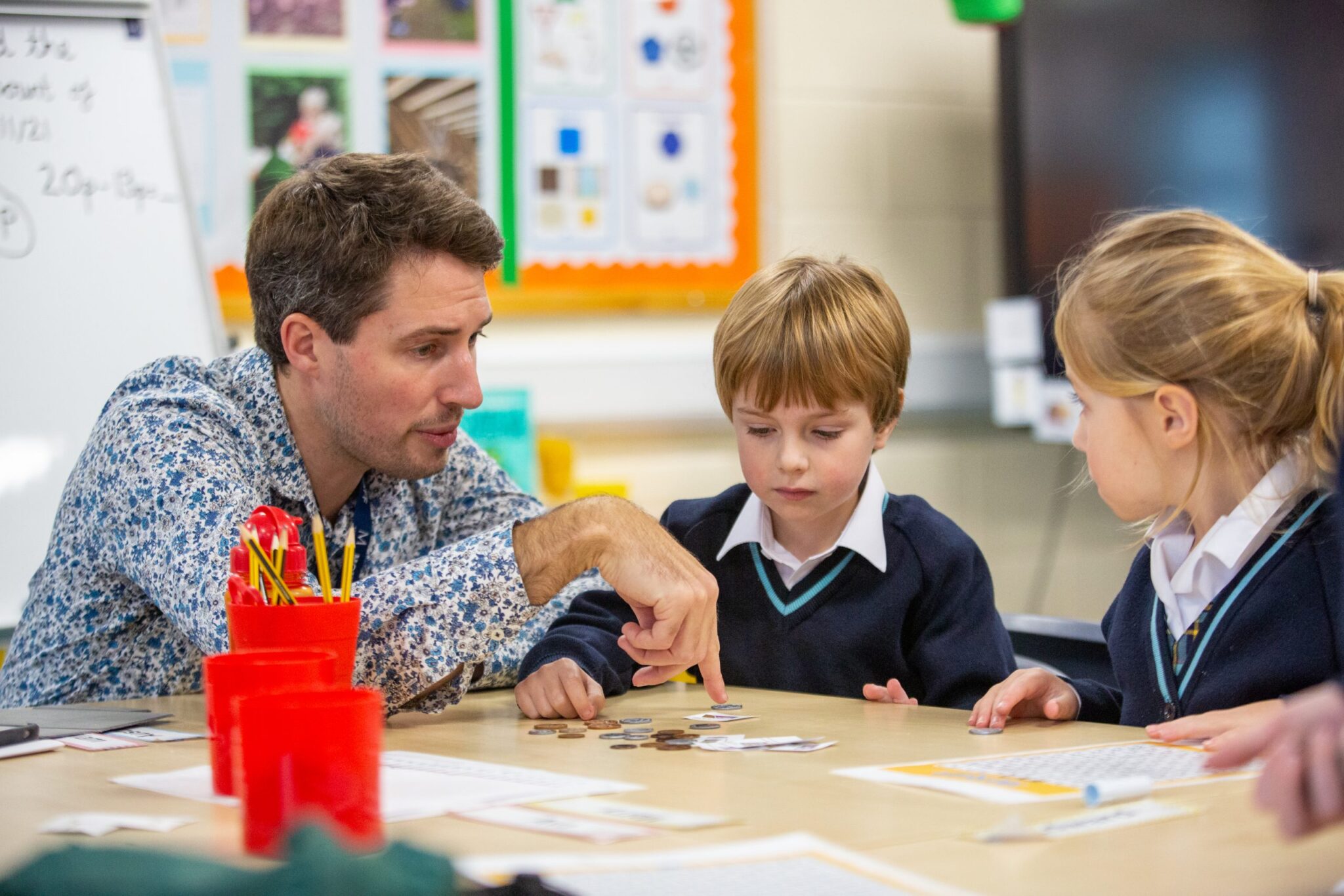Source: 17 Ways to Use Social Media for Education & Teaching (dotefl.com)
In this article, we explore 17 effective ways you can use social media for education, from sharing resources and promoting your services and events to building stronger teacher-student relationships.
Social media has become an integral part of both teaching and learning. It doesn’t matter if you’re an educator or a student, you can harness the power of social media platforms to enhance education, foster collaboration, and create an inclusive online community.
With that in mind, let’s take a look at some ways you can use social media for education and teaching.
How to Use Social Media for Education & Teaching
Did you know that there is a world on social media outside of reels, advertising, and cat videos? While it may seem that this is what dominates your social feeds, social media can be used for education and teaching too!
Whether you’re working at a school or starting your own tutoring business, there are many ways you could be implementing social media to your advantage. We’ll review some of the best ways here.
Connect with Your Students
One of the best ways to use social media in education is to use what it was designed for, facilitating connections.
By actively collaborating with your students on social media, you can strengthen your teacher-student relationship and create a sense of community and support online. This collaborative approach promotes engagement, creativity, and a supportive learning environment for all participants.
To achieve this, you can establish a specific social media account or group for your class, providing a platform for discussion and collaboration. Share relevant resources, pose discussion questions, and encourage students to share their ideas and contribute.
By engaging with their posts and acknowledging achievements you can foster a classroom community of open communication and trust. You can also use polls to gauge opinions or preferences, making students feel more involved in class decision-making.
Here are a few ideas using different social media sites:
Facebook Groups
Facebook Groups are a great tool for community building. Educators and educational institutions alike can leverage them not only to keep alumni engaged but also to create interest-based groups for current students.
By forming groups centered around shared interests, teachers can facilitate discussions, share relevant content, and keep students updated with school happenings. These groups provide a platform for like-minded individuals to connect, discuss topics of interest, and enhance their overall school experience.
Pinterest Boards
Pinterest, known for its visual organization, offers a unique opportunity for creative learning. Students and learners can benefit greatly by using Pinterest to curate mood boards and collections related to specific topics.
Teachers can create boards for different classes or subjects, allowing students to pin their ideas for assignments or projects. For example, a Geography teacher can initiate a collaborative Pinterest Board for a specific city, encouraging students to pin unique pictures and insights related to that location. This interactive approach not only engages students creatively but also makes learning more impactful.
YouTube
Beyond its reputation as a video streaming platform for entertainment, YouTube serves as an excellent educational resource. Teachers can utilize YouTube to upload and share informative videos related to different lessons, or even create their own channel. Existing educational channels like TedEd also provide valuable content that teachers can incorporate into their lessons to make topics more engaging.
Students, on the other hand, can leverage YouTube for presenting assignments or projects in the form of videos. These can either be shared privately with the class or with a global audience!
Build an Online Community
This ties into using social media to connect with students, but it’s often overlooked by many teachers. Not only is it a great way to connect with students it also represents a way to connect with your fellow teachers to exchange ideas and resources.
By building an online community you can enjoy both the benefits for yourself and your students.
For students, create groups on Facebook and encourage them to participate in discussions or collaborate on projects using platforms like Google Drive. Fostering a sense of community in the digital space strengthens the overall educational experience, promoting knowledge sharing and peer support.
For yourself, building an online community and integrating social media as part of your marketing strategy can do wonders. By nurturing a community you can grow your personal brand or enhance the reputation of the school you work for. This will mean only one thing, more students for you!
Acquire Students
As an educator, establishing a presence on social media platforms can greatly benefit your connection with prospective students. If you’ve done any form of private tutoring, you may know that one of the best ways to acquire students is through social media.
When I was teaching English abroad I created a Facebook group for the city I was living in to advertise English classes. This wasn’t just a group for me, it was for other tutors too, and it acts as a space where tutors can advertise their services and students can request specific lessons. It must have connected hundreds if not thousands of tutors to students by now, which just shows how powerful social media can be.
You also shouldn’t forget about LinkedIn. Yes, this is classified as a social media platform! If you create a professional LinkedIn profile that highlights your expertise you can receive offers of work from both students and schools.
Don’t neglect your other social media profiles either. Share engaging and informative content related to your subject matter to showcase your knowledge and build your reputation. Platforms like LinkedIn, Facebook, and YouTube are all great for this and can help you to connect with potential students. By actively using social media, you can effectively market yourself as a tutor and attract students seeking your expertise.
It’s no coincidence that many educational institutions now maintain active profiles on platforms like Instagram, X, and TikTok, offering a window into the vibrant academic and social life of the institution.
Social Media Advertising
If you’re ready to take things up a notch, leverage targeted advertising to reach a broader audience interested in your tutoring services. Offer free webinars or workshops on social media to demonstrate your teaching style and expertise, attracting interested learners that you can convert into clients. Then share success stories or testimonials from previous students to build credibility.
By encouraging satisfied students to share their positive experiences, you create a word-of-mouth referral network online which can lead to huge success.
Share Resources
Any social media platform where you can create communities or followings is a great place to share resources. So, it’s not surprising that dedicated educational technology is being heavily pushed in this direction. However, you can still easily use social media for this.
Social media is great for sharing links to online courses, e-books, valuable resources, or reputable websites that complement your teachings. You can also post relevant articles, videos, and infographics within your community regularly to keep your students engaged. Platforms like Twitter and Facebook are great for sharing bite-sized tips and tricks that align with your educational content.
By actively utilizing social media in this way, you create a virtual hub for educational materials, promoting accessibility and engagement among your audience. You can even get your students to share their favorite resources, as this facilitates their participation.
Enhance Classroom Environment
Forge a stronger teacher-student relationship by embracing social networking platforms. Platforms like Facebook provide a space for informal communication, enabling students to ask questions, seek clarification, and share their thoughts outside the constraints of the traditional classroom setting. This approach helps create a more approachable and accessible learning environment.
Create Class-Specific Accounts
Organize and streamline class-related information by creating class-specific social media accounts for better organization. Whether it’s an Instagram account for visual projects, an X (Twitter) handle for quick updates or a dedicated Facebook group for in-depth discussions, this strategy helps both teachers and students stay organized and focused on specific aspects of the course.
School Projects
Enhance the collaborative nature of school projects by incorporating social media into the learning process. Class-specific accounts or hashtags can be used to streamline project updates, facilitate resource sharing, and encourage students to engage in meaningful discussions beyond the classroom. This approach not only fosters teamwork but also equips students with digital collaboration skills essential for their future endeavors.
Promote School Spirit
Boost school spirit by actively promoting events and achievements on social media. Platforms like Instagram, Snapchat, and TikTok are ideal for sharing visually appealing content that showcases the dynamic and vibrant aspects of school life. Encourage students to participate and share their experiences online, creating a positive and inclusive digital representation of your school.
Stay Informed & Share News
Utilize social media to disseminate important news and updates. This could be about your availability as a private tutor, or if you’re part of a school it could be related to school news or upcoming school events.
By regularly posting on platforms like Facebook and Twitter, you can keep both current and prospective students informed about any changes to your services or those within the educational institution. This real-time communication helps create a sense of transparency and community within the educational environment.
Improve Student Engagement
If you’re teaching online, take advantage of live-streaming features on platforms like Facebook, Instagram, or YouTube to bring lectures and class discussions directly to your students. This approach accommodates students who may miss a class, promotes real-time interaction, and enhances overall engagement.
Additionally, live streaming offers a great alternative to live lectures, providing a platform for Q&A sessions and allowing students to actively participate. This makes it great for remote learning, further fostering an interactive learning environment.
For homework, you can get students to re-watch part of the stream or share educational videos or tutorials related to your subject, offering additional learning opportunities outside the classroom.
Homework Assignments
Optimize student engagement by utilizing social media for homework assignments. Platforms like Google Classroom, Facebook groups, or X (Twitter) can serve as effective channels for distributing assignments, sharing relevant resources, and facilitating discussions. This approach not only meets students where they are but also encourages collaborative learning beyond the confines of the physical classroom.
Promote Language Learning
Integrate language learning into social media platforms to make it more interactive and engaging. Create language-specific groups on Facebook or WhatsApp, where students can practice their language skills through discussions, resource sharing, and even connect with native speakers. This approach enhances language acquisition by providing real-world applications and cultural insights.
This leads us nicely to our next point.
Provide Students with Real-World Applications
Demonstrate the real-world applications of classroom lessons by sharing relevant content on social media platforms. Whether it’s news articles, case studies, or industry updates, connecting theoretical concepts to real-world examples helps students understand the practical implications of their learning. This approach fosters a deeper understanding and appreciation for the subject matter.
Conduct Research
Empower students to conduct research through social media channels. Platforms like X (Twitter) provide access to a vast network of professionals, academics, and experts in various fields. Encourage students to explore these networks, facilitating connections and discussions that extend beyond the traditional boundaries of academic research.
Boost Critical Thinking
Integrate social media challenges into your teaching practices to promote critical thinking and creativity. Platforms like Instagram or TikTok can be used for educational challenges that encourage students to apply what they’ve learned in unique and innovative ways. This approach not only reinforces theoretical concepts but also enhances problem-solving skills.
Support Shy Students
Create a supportive online environment for shy or introverted students. Utilize social media platforms to encourage participation through online discussions, group chats, or anonymous question submissions. Providing alternative avenues for engagement allows every student, regardless of their personality, to contribute to the learning environment comfortably.
Enhance Student Self-Esteem
Celebrate student achievements and successes on social media to boost self-esteem and motivation. Share accomplishments, projects, or noteworthy contributions within the class or broader academic community. This positive reinforcement not only recognizes individual efforts but also fosters a culture of encouragement and support.
Build Teacher-Student Relationships
Establishing strong teacher-student relationships is essential for effective learning. Social media platforms help educators to connect with students on a more personal level, fostering a sense of trust and open communication. While creating a friendly online presence, it is crucial to maintain professionalism and establish clear boundaries to ensure a positive and respectful educational experience.
Facilitate Responsible Social Media Use
As an educator, you play a pivotal role in promoting responsible social media use among students. Incorporate digital literacy programs into your curriculum, educating students about online etiquette, privacy, and the potential impact of their online presence on both personal and academic aspects of their lives. This proactive approach ensures that students develop the necessary skills to navigate the digital world responsibly.
Use Social Media for Education & Teaching
Social media platforms offer a myriad of opportunities to revolutionize education and student engagement.
By integrating responsible social media use into educational systems, both educators and students can benefit from enhanced communication, collaboration, and a deeper understanding of academic concepts.
As technology continues to evolve, embracing social media in education becomes increasingly crucial for preparing students for the fast-paced, digital world they will encounter beyond the classroom.
So, whether you are an educator or student, harness the power of social media to transform traditional learning experiences into dynamic and interactive educational journeys.
Categories: News


